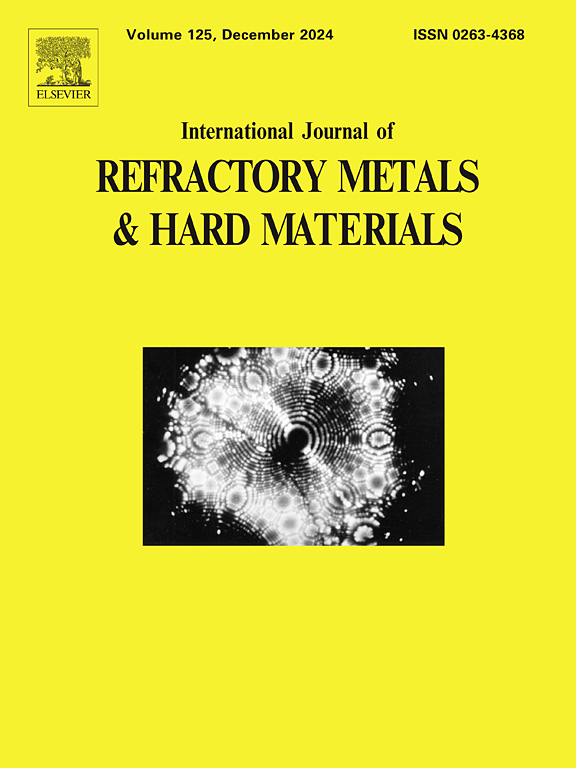Liquidus surface projection and vertical sections of the phase diagram for the Mo–Mo5SiB2–TiC pseudo-ternary system
IF 4.2
2区 材料科学
Q2 MATERIALS SCIENCE, MULTIDISCIPLINARY
International Journal of Refractory Metals & Hard Materials
Pub Date : 2024-12-04
DOI:10.1016/j.ijrmhm.2024.106998
引用次数: 0
Abstract
TiC-reinforced Mo–Si–B alloys (designated as MoSiBTiC alloys) exhibit great potential for application in the aerospace industry, due to their high melting point, moderate density and attractive high-temperature strength and creep resistance. Nevertheless, further material design and industrialization requires more systematic understanding of the phase diagram and solidification paths of Mo–Mo5SiB2–TiC pseudo-ternary system. In this study, an advanced ultra-high temperature thermal analysis method employing blackbody radiation and an electromagnetic levitation technique for in situ observation of the solidification process, were utilized to experimentally investigate the solidification process and reaction temperature of alloys in the vicinity of the Mo–Mo5SiB2–TiC ternary eutectic point. On the basis of the experimental results, three vertical sections of phase diagram at 9 mol% Mo5SiB2, 10 mol% TiC, and 70 mol% Moss isopleths in the Mo–Mo5SiB2–TiC pseudo-ternary system were established. The liquidus surface projection on the Mo–Mo5SiB2–TiC system has also been reconstructed, with the addition of a new Mo2B primary phase region and a larger Mo5SiB2 primary phase region than previously reported.
求助全文
约1分钟内获得全文
求助全文
来源期刊
CiteScore
7.00
自引率
13.90%
发文量
236
审稿时长
35 days
期刊介绍:
The International Journal of Refractory Metals and Hard Materials (IJRMHM) publishes original research articles concerned with all aspects of refractory metals and hard materials. Refractory metals are defined as metals with melting points higher than 1800 °C. These are tungsten, molybdenum, chromium, tantalum, niobium, hafnium, and rhenium, as well as many compounds and alloys based thereupon. Hard materials that are included in the scope of this journal are defined as materials with hardness values higher than 1000 kg/mm2, primarily intended for applications as manufacturing tools or wear resistant components in mechanical systems. Thus they encompass carbides, nitrides and borides of metals, and related compounds. A special focus of this journal is put on the family of hardmetals, which is also known as cemented tungsten carbide, and cermets which are based on titanium carbide and carbonitrides with or without a metal binder. Ceramics and superhard materials including diamond and cubic boron nitride may also be accepted provided the subject material is presented as hard materials as defined above.

 求助内容:
求助内容: 应助结果提醒方式:
应助结果提醒方式:


